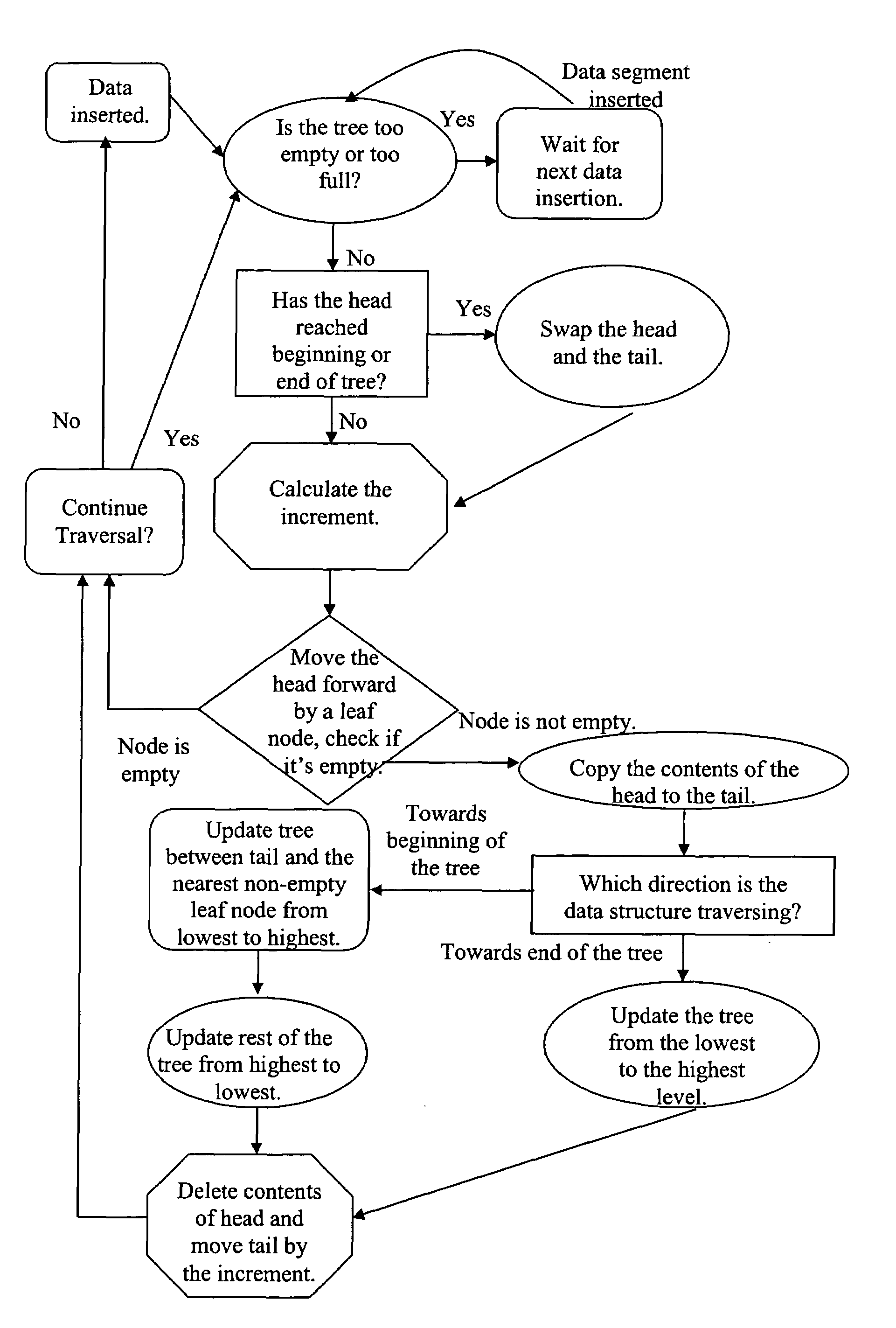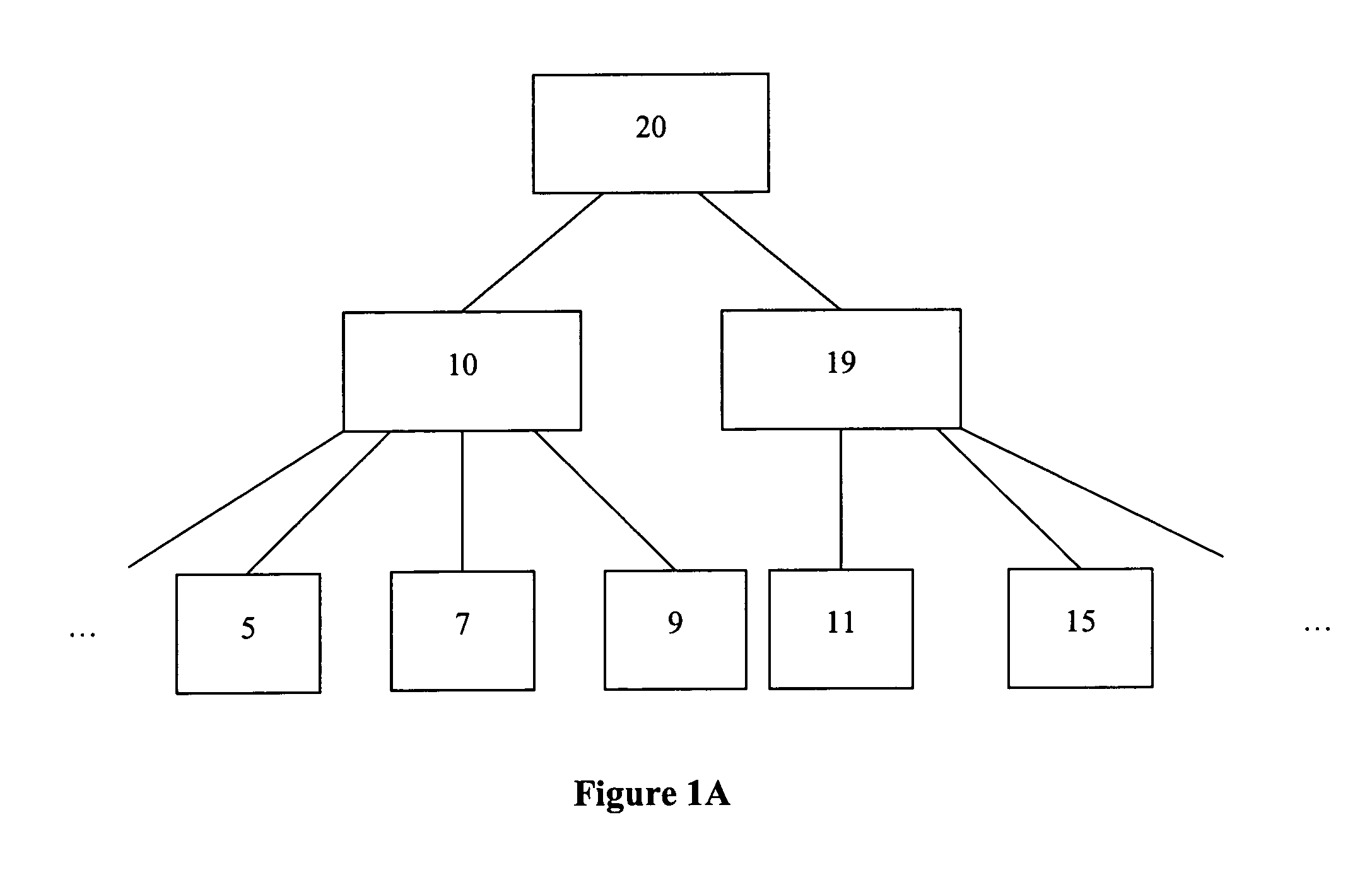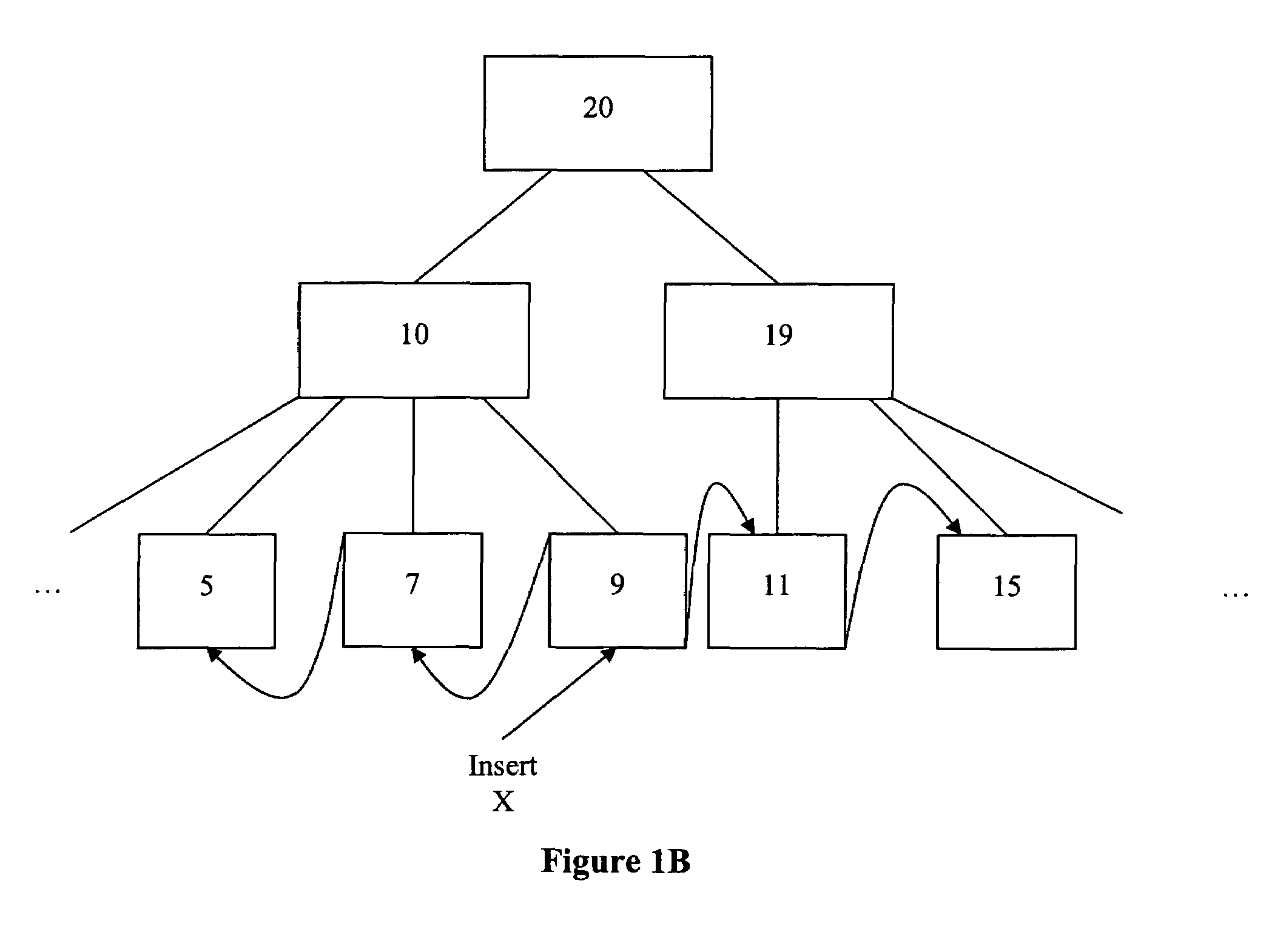Method and system for rapid insertion of various data streams into sorted tree structures
a data stream and tree structure technology, applied in the field of computer hardware, can solve the problems of substantially prolonging the insertion process, processing that could be excruciatingly slow for a non-trivial tree structure, etc., and achieve the effect of fast data insertion
- Summary
- Abstract
- Description
- Claims
- Application Information
AI Technical Summary
Benefits of technology
Problems solved by technology
Method used
Image
Examples
Embodiment Construction
[0016]The present invention provides the method and system that enable the rapid insertion of various data streams into a sorted tree structure. Furthermore, the tree typically encompasses a fixed number of levels each comprising a fixed number of nodes. Each node of the tree is indexed and each leaf node comprises a number of data segments. A leaf node may be filled if it does not contain any unused entries or cannot accommodate an inserted data segment. One significant scenario that impedes rapid insertion of data into a sorted tree occurs when the data segments are inserted into a filled leaf node, which may in turn cause reconstruction of the entire tree. Constant redistribution of empty spaces among the leaf nodes in the present invention significantly reduces the number of filled leaf nodes, thus eliminating the majority of the slow data insertions into filled leaf nodes. Furthermore, the redistribution process decreases the average distance to the nearest non-filled leaf node...
PUM
 Login to View More
Login to View More Abstract
Description
Claims
Application Information
 Login to View More
Login to View More - Generate Ideas
- Intellectual Property
- Life Sciences
- Materials
- Tech Scout
- Unparalleled Data Quality
- Higher Quality Content
- 60% Fewer Hallucinations
Browse by: Latest US Patents, China's latest patents, Technical Efficacy Thesaurus, Application Domain, Technology Topic, Popular Technical Reports.
© 2025 PatSnap. All rights reserved.Legal|Privacy policy|Modern Slavery Act Transparency Statement|Sitemap|About US| Contact US: help@patsnap.com



